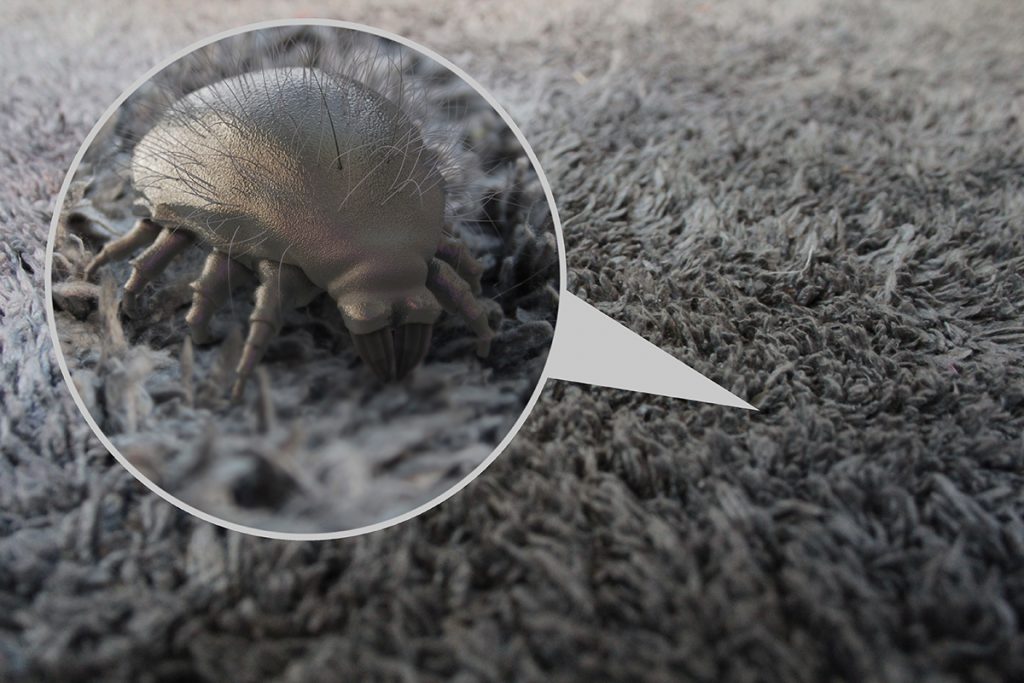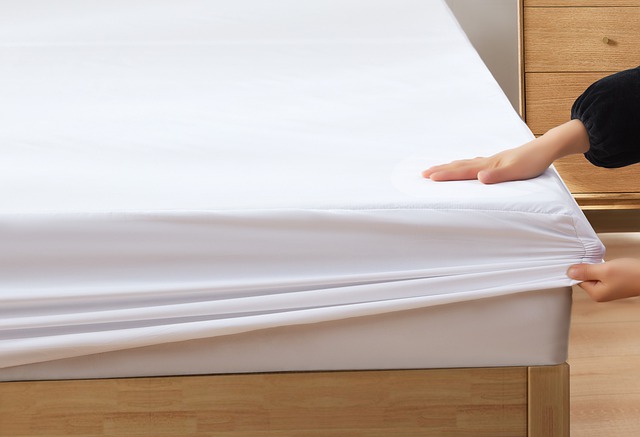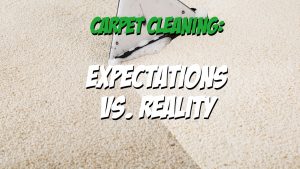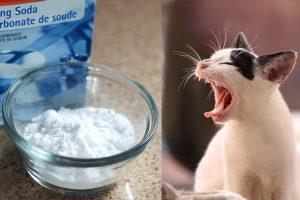Dust Mites
Dust mites are an all-year pest that can survive in a number of different environments. They’re microscopic, which means you won’t see them, but they do leave behind droppings that can trigger allergic reactions. What’s more, they reproduce quickly and can double their population every 3 to 4 weeks.

Luckily, there are some preventative measures you can take to make your home less welcoming to dust mites. If you are already dealing with a dust mite infestation, there are some methods of extermination you can try on your own or we offer professional services that will help eliminate them for good.
Signs of dust mite infestation.
The signs of a dust mite infestation are often quite subtle. If you’ve been noticing symptoms like sneezing, runny nose, and itchy skin that don’t seem to be going away after a few weeks of treatment, it might be time to investigate further. For example: if you see tiny red spots on your skin, you may have an allergy to dust mites. You may also have an allergy to dust mites if you have a runny nose or sneezing that hasn’t responded well enough with over-the-counter medications like nasal sprays or antihistamines.
Dust mites reproduce quickly and can double their population in 3 to 4 weeks.
The life cycle of a dust mite is about 10 days. In that time, an unfertilized female will lay up to 30 eggs. These hatch into larvae that feed on dead skin cells and other organic material. They then develop into adults over the next few days.
In short, dust mites don’t need any help reproducing—they’ll do it all by themselves! And since they reproduce so quickly, they can double their population in just three or four weeks if left unchecked.
Make your home less welcoming to dust mites.
Dust mites are microscopic arachnids that live in warm, humid environments. They tend to thrive in bedrooms, where they feed on the dead skin cells we shed every night.

These dead skin cells contain a protein called tryptophan that makes up 20 percent of dust mites’ diets.
To make your home less welcoming to dust mites:
- Keep your home clean and dry. Wipe down surfaces regularly with a damp cloth or vacuum regularly with a HEPA filter to remove as much dust as possible from the air (and then dispose of the bag). If you use soft bedding or plush toys, wash them often in hot water (130 degrees Fahrenheit), which will kill any remaining dust mites and their eggs that may be stuck in those materials.
How to get rid of dust mites in carpets/rugs.
- Use an electrostatic carpet cleaner. If you don’t already own one, these can be purchased at stores like Target or Bed Bath & Beyond.
- Vacuum with a HEPA filter vacuum cleaner, ideally with a rotating brush attachment to agitate the fibers of your rug and loosen dust mite debris that’s become embedded in it.
- Wash your rugs using detergent and warm water, then rinse them thoroughly, followed by spinning them in the machine dryer to remove all residual moisture from their fibers.
- Remove and clean both the base of the rug (if there is one), as well as its pad—that thick layer of foam underlayment that cushions your flooring against impact damage caused by abuse over time—by washing them separately in hot soapy water with laundry detergent added to it; rinse thoroughly afterwards before returning both pieces back onto their respective spots on top of where they were originally situated when first purchased for use around your home/business premises.”
How to get rid of dust mites in pillows, blankets and mattresses.
Dust mites are a common problem in homes, especially in bedrooms. They are microscopic insects that can cause skin allergies and asthma symptoms. Dust mites thrive in warm, humid environments and they eat organic matter like dead skin cells and pet fur. Common areas where you’ll find dust mites include bedding, carpets and upholstery.
To reduce the number of dust mites in your home:
- Use a vacuum cleaner with a HEPA filter (a type of filter that traps tiny particles). If you don’t have one, it is worth buying one just for your bedroom or other rooms where you sleep or sit down frequently. You should also vacuum carpets at least once per week to remove any dead skin cells from floors as these particles provide food for dust mites who live there more easily than elsewhere due to their size being too large for our eyesight but not big enough for us humans yet small enough to be inhaled by us through air currents caused by movement such as walking around on hardwood floors etc…
How to get rid of dust mites in upholstery and curtains.
If you have upholstery in your home, it is important to thoroughly clean it. Dust mites can live in the fibers of your upholstery and dust mites also lay eggs there. To clean your upholstery:
- Remove the cushions from couches, chairs and sofas. Vacuum the cushions to remove any dust mite droppings that are present on them.
- Wash all fabrics using hot water (140°F or above) and dry on high heat for at least 15 minutes to kill off any remaining eggs or insects before putting them back into their places; this will ensure that they won’t come back!
A professional service can help you get rid of a large infestation all at once.
A professional service can help you get rid of a large infestation all at once. If you have an especially bad dust mite problem, then a home cleaning service is probably not enough to take care of it. You may need the assistance of professionals to do so.
Dust Mites can be difficult to eliminate, but with the tools and knowledge you can remove them from your home
It is difficult to eliminate dust mites. Dust mites are microscopic bugs that live in the crevices of your bedroom, sofa and carpet. They feed on dead skin cells in your bedding and clothes. They can cause allergies and asthma symptoms in people who are sensitive to their presence.
To remove dust mites from your home, you need an experienced pest control expert who knows how to get rid of them completely and completely efficiently. Our experts have been helping families deal with this problem for decades – we know how it works and how best to treat it!
Still Unsure?
If you’re still unsure if you have a dust mite infestation, or just don’t have time to deal with it yourself. A professional cleaning company can evaluate the problem in your home and discuss options for eliminating any existing dust mite infestations.





